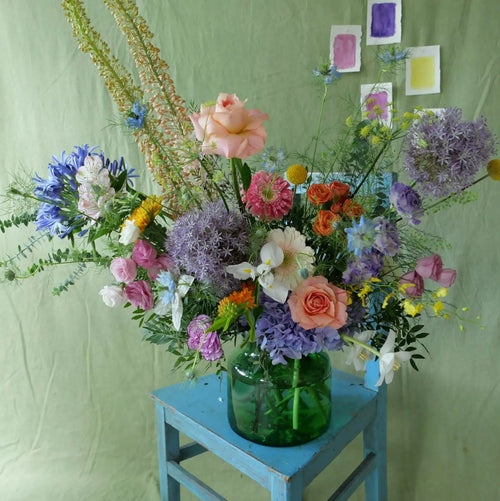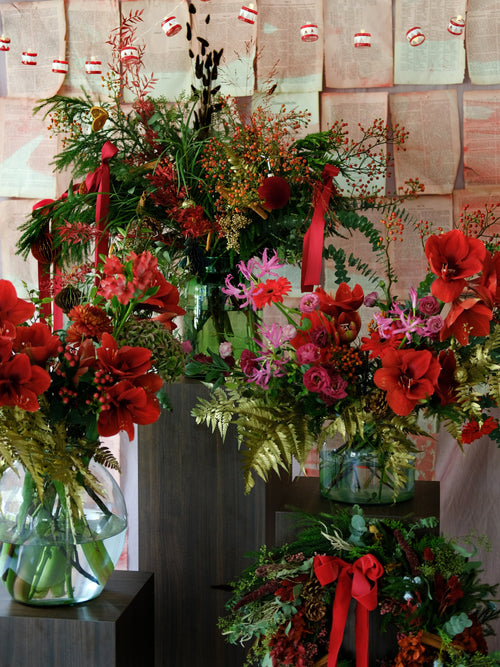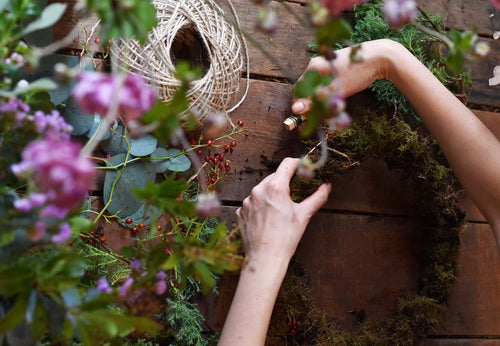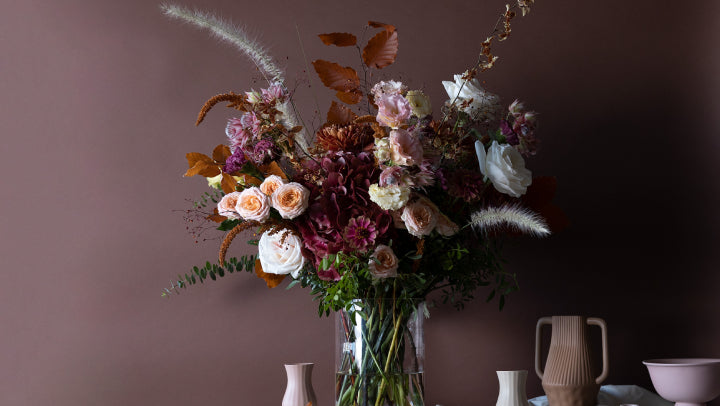
Like painting or writing, floral arrangement is an art. You start with a blank canvas and express your imagination with the provided materials.
Unlike the above skills, one might say that anyone can do floral arranging since it's stuffing flowers in a vase. Flower arranging is done and paired with creativity and constant practice, just like any art course. It may be challenging to grasp the concepts, but as you mix and match flowers, flower arranging will be second nature to you.
Just like how writers and artists need practice to improve their creative works, floral arrangers also need practice to become competent and exceptional. Should you want to delve into the unique set of rules, structures, styles, and elements of flower arrangement, it’s best to attend a floral arrangement course.
In particular, Charlotte Puxley offers a variety of workshops that can teach flower arranging that accommodates any occasion. An example would include the Bridal Bouquet and Boutonniere Workshop, where they teach flower arranging that is suitable to brighten up your big day.
Colour scheme
 The colour scheme is probably the first thing an observer notices about a floral design. You can influence the mood of a composition with colour. After all, you can make it seem gentle or intense, warm or cool, cosy or intimate.
The colour scheme is probably the first thing an observer notices about a floral design. You can influence the mood of a composition with colour. After all, you can make it seem gentle or intense, warm or cool, cosy or intimate.
Learning to arrange colours and how they work together is essential in floral arrangement. If you need any inspiration on matching colours, you can take a look at the arrangements we offer in our subscriptions, such as the Free and Frilly and the Classic.
What makes our daily florals special is that we match the colour scheme based on the corresponding season during the year. Currently, to commemorate the fall season, we have launched our Autumn bouquets, which you can get either in a hand-tie or in a vase, called A Crisp Autumn. Think deep peaches, burgundy beach leaves, Pennisetum grasses growing in our garden, and finally Oncidium orchids.
The nub of the matter is that some colours work better than others. You can start with basic ideas regarding the colour wheel: monochromatic, adjacent, complementary, and polychromatic colours.
Then, you can take the next step: experiment with different colour combinations and colour values and mix various shades in the colour palette. With the knowledge of colour schemes, you will be able to bring out the flowers’ true beauty.
Vessels and containers
The outcome of the floral arrangement, such as the size, shape, and style, is influenced to no small degree by its vase or container. The correct shape and style of the vase will determine the effectiveness of your arrangement.
For example, regular flared vases give flowers height and impact; they make the flowers stand upright while limiting the spread of stems with a narrow base.
There are also globe-shaped or fishbowl vases. Moreover, there are cutesy cube vases and tall, straight-column vases— perfect for a sleek and modern take on classic flower designs.
Should you want to take an eco-friendly approach to the floral arrangements, you can try recycling items, such as a wine bottle, jam jar, or a terracotta pot. In particular, our Pick N Mix vases can match with any flower arrangement, which is ideal to decorate any part of your home.
Since our bud vases come in many shapes and sizes, their retrofitted look can often add to the aesthetics of your composition, adding the right creative touch or just making it look more personalised.
Flower shapes

The shapes of different flowers can affect the perceived size, bulk, and texture of your floral arrangement. It is essential to recognise them for your creation to look its best. Although many flower varieties are available, they can be narrowed down to specific shapes.
There are regular-shaped flowers like sunflowers and chrysanthemums, which are radially symmetrical with same-shaped petals; rosette-shaped flowers like roses that look geometric and work best as feature flowers; and airy and delicate flat-topped flowers that provide great textural interest and detail.
You also have dome-shaped flowers like hydrangeas and globe-shaped flowers like alliums and tulips; they provide substance and density to a floral composition, and their shot of colour looks stronger. Other flower shapes are spears (delphiniums), sprays (spray roses, lilies), and spires (lavender, lily of the valley).
Foliage
Foliage or greenery adds texture, proportion, and an extra flourish to your floral design. It can add height and width and make a composition look more balanced and substantial. You can use foliage to break a mass of blooms and add various colour accents. Some leaves are even pretty enough to be used like flowers!
Choose foliage in such a way as to make for a compelling backdrop. For example, you can add feathery-looking leaves to provide a delicate texture to the bunch or utilise dense fillers to enhance the compactness of a shape or design. Side shoots are also great in making an arrangement look more proportional.
Final thoughts

Learning about the values of colour schemes, containers, flower shapes, and foliage can involve technical knowledge and know-how. There is a lot of work required to create bespoke floral arrangements in Singapore, so signing up for our Autumnal Vase Workshop will prove to be beneficial.
Charlotte Puxley Flowers also have other seasonal workshops that can cater to any special occasion, such as birthdays and weddings. We teach in detail the floral design techniques, including flower arrangement tips and best practices. Learn from our expert florists in Singapore by booking a class today.




0 comments